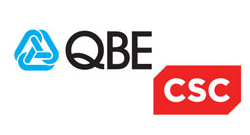Making the case for IT Modernisation
A blog from guest author Trinny Truu, Field Marketing Manager at Cleo.
We’ve all heard the buzz around IT modernisation and how it supports digital business transformation. But what does IT modernisation really mean? The definition will certainly vary across organisations, industries, and personas, but it ultimately means leveraging technology to meet expanding business goals. It means aligning IT and business units to compete in today’s digital economy. It means digitising and improving the customer experience to improve service levels and create market differentiation.
While it can be some or all of those things, it’s become increasingly clear that the likes of Amazon and Google have made modernisation mandatory for organisations to increase agility and meet expanding customer demands.
IT modernisation centers around the concept of upgrading technology which may include the adoption of new software or platforms driving tangible benefits such as improved end-user experience, faster response times, quicker fixes and increased uptime. Largely executed to streamline business operations and infrastructure, modernisation is usually based on long-term gains and may translate into relying less on expensive, complex legacy systems that are difficult to maintain.
Why Modernise?
In short, it’s about survival. The modern company must develop new processes to handle omni-channel approaches (thanks to the “Amazon Effect”) and gain the agility to reduce time to market. Too many businesses are held hostage by their homegrown and legacy solutions and cannot efficiently onboard new partners and new sources of revenue. This limits their ability scale and grow.
Companies everywhere are looking for better ways to leverage technology to drive revenue. This means IT decision-makers are searching for new and creative ways to stand out from their competition, while gaining new customers, expanding services, and growing their bottom line.
It’s no secret that organisations recognise the value in digitally transforming their environment, but it isn’t easy to do so, and it takes committed alignment between business and IT departments. The reality is, companies struggle with modernisation because they cannot rely on legacy technologies that they’ve depended on for so many years.
Customers and trading partners are becoming more digital than ever, so businesses must be able to handle the different processes those relationships require and enable their ecosystems.
However, when a company is unable to handle the types of workflows and integrations they need to execute these initiatives, it drastically hinders its ability to differentiate from the competition.
Since so many different companies have begun some form of a digital transformation, in order to truly offer those customers added value, organisations must adapt and ensure that they can easily scale into new digital business use cases. But first, there are a few things that companies need to do.
- Consolidate, consolidate, consolidate
Companies who embark upon digital transformation must consolidate their disparate and legacy systems, applications, and integrations in order to streamline data flows. Organisations that consolidate sprawling systems gain the ability to leverage digital technology to better serve customers and remain ahead of their competition.
- Automation is king
In addition to consolidation, businesses must automate core data flow processes to reduce the risks caused by home-grown solutions or manual processes. Automation cuts down on the extensive time and effort previously required to deliver communications and better optimize and leverage data.
Instead of wasting valuable employee time and resources on manual business processes, automation is fundamental for gaining efficiencies for long-term success. It also means as business strategies change, IT departments need to provide the resources required by the business and its customers.
- Visibility
Real-time, end-to-end data visibility and control for IT and business users is increasingly critical. Key stakeholders must be able to view their data within its entire life cycle with contextualized information based on roles.
Cleo Integration Cloud enables the world’s leading organisations to accelerate cloud-to-cloud and cloud-to-ground integration processes to easily integrate applications, storage repositories, and business platforms. Through Cleo integration, all your data is connected in an elegant way that better powers your cloud, on-premise, or hybrid environments and delivers more value to your business and to your end customers. Discover the power of ecosystem-driven integration and how businesses use technology to remain competitive.
If you think an Integration solution could help secure your business or want to learn more, get in touch today at info@handd.co.uk or phone +44 (0)845 643 4063.













